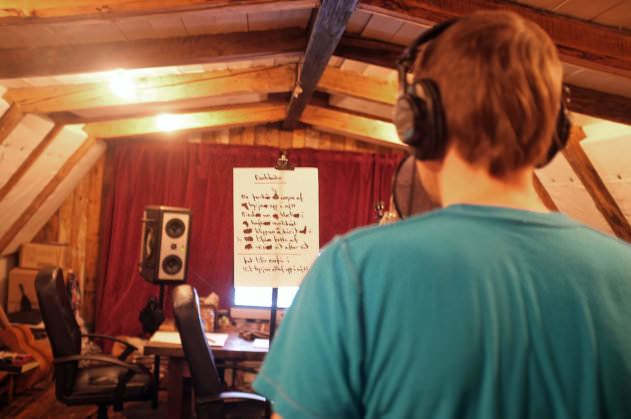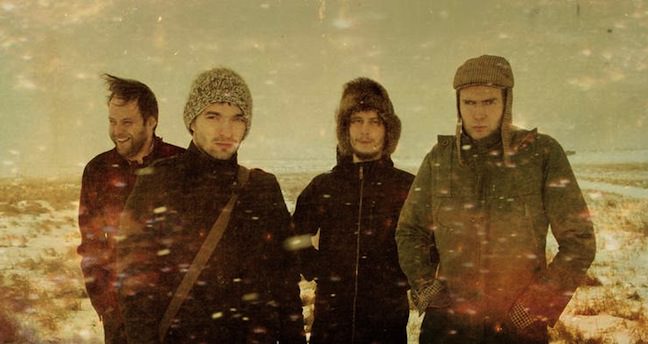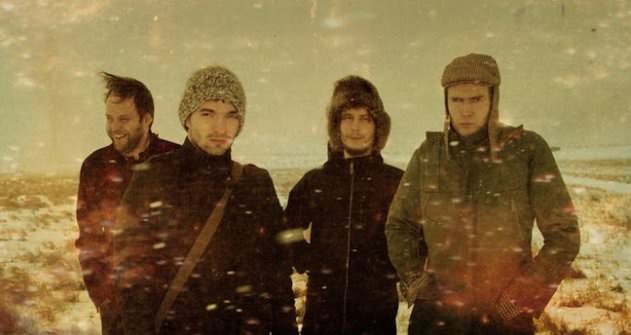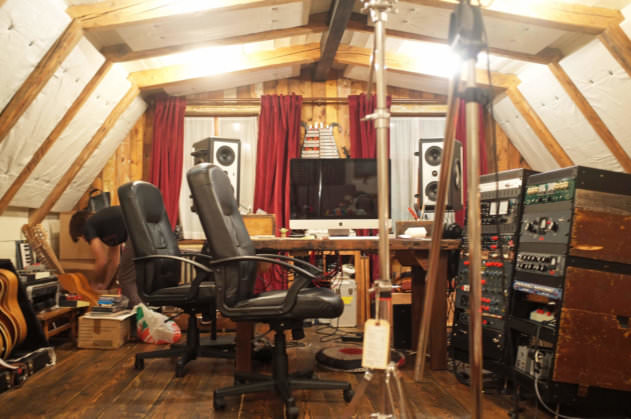Richard Buskin speaks to Sigur Rós producers Alex Somers and Birgir Jón Birgisson about the recording of Valtari, an album which began life as an ambient work but saw the light of day – nearly four years later – as a much more electronic affair.
When, in March of this year, Sigur Rós announced the release of their sixth studio album, bass player George Hólm stated, “It’s not like anything else we’ve ever done. You could say our past records have been uplifting or depressing, but this I’d compare to looking at an old landscape painting.”
While Hólm also reassured fans that the Icelandic four-piece “haven’t made a dance record,” he said that Valtari has “more electronic stuff than before,” and this is confirmed by Birgir Jón ‘Biggi’ Birgisson – who engineered the basic tracks at the band’s own Sundlaugin studio – as well as Alex Somers, who ended up engineering and co-producing the record at his own facility.
original tracking
Located in the town of Mosfellsbær, just east of Reykjavik, Sundlaugin boasts a spacious, high-ceilinged, 600 m2 live area that was converted from an abandoned 1930s swimming pool, while its 35 m2 control room houses a 36-channel Neve V0 console, Otari MTR-90 analogue tape machine, Otari MTR-12 half-inch two-track, Pro Tools HD2 rig, SSL Soundscape setup, and a wealth of vintage and state-of-the-art microphones and outboard gear.
Birgisson has been the chief engineer there since 2003, three years after it was built, and he employed fairly standard miking when the recording sessions commenced for Valtari, whose name in English means ‘steamroller’.
He used a Neumann U47 to record Jón ‘Jónsi’ Þór Birgisson’s falsetto vocals, and a Shure SM57 and Pacific Pro Audio ribbon mic to capture his guitars. George Hólm’s bass was recorded with a combination of DI and U47, and for Orri Páll Dýrason’s drum kit there was a Coles ribbon overhead, an AKG D25 or Sennheiser e602 on the kick, an SM57 on the snare, a Sennheiser 421 on the rack tom, an AKG D12 on the floor tom, an AKG C12A for mono ambience and two Neumann CMV-563s for stereo ambience.
This was the collective setup when all four men recorded ‘Varúð’ (‘Caution’) together as a band. Otherwise, they tracked their parts separately for all of the other numbers on a record that Jónsi Birgisson has described as “more experimental… like a new beginning.”
“The material that we originally recorded was quite different from what ended up on the album,” engineer Birgir Birgisson explains. “The album’s a lot more upbeat, it’s more electronic and this was all part of a normal process, changing bits and bobs until they were happy.”
relocation
After Sigur Rós announced in May 2009 that they’d almost completed recording their new album – one that purportedly contained slower, more ambient music than their previous two studio records – Jónsi then told fans in January of the following year that the work had been scrapped and that the band was on an indefinite hiatus.
“A lot of the material consisted of unfinished sketches,” says Birgir Birgisson. “You know, really long ambient drones that just needed more texture and focus.”
After Jónsi’s debut solo album, Go, was released in April 2010, he embarked on a tour of North America and Europe while other members of the group dedicated time to the birth of their children. Then, once Sigur Rós reconvened in 2011, it was at the studio of Jónsi’s partner, American musician and visual artist Alex Somers.
“They initially hired me to just mix the record,” Somers explains. “But then, after I had a week to work on it by myself, I came back with a list of overdubs and other things that I thought would be constructive, and at that point it became clear I’d be doing more than just mixing.
“They were really open to that, and I was so lucky in that respect because, liking what they have, they never normally collaborate with outsiders. However, this was a good set of circumstances. We totally saw eye to eye about the record and I ended up working with them for six weeks.”
The somers influence
A native of Baltimore, Maryland, Somers acquired a four-track tape machine when he was 14 and experimented with it while playing guitar in several high school rock bands. Eventually, he also learned to play the drums and several other instruments, and in 2002 he began attending Boston’s Berklee College of Music, where he teamed up with Scott Alario – who was in a neighbouring art college – to form a band named Parachutes.
Not that Somers particularly enjoyed his time at Berklee which, he now asserts, was “too academic and boring.” So, in 2005, having already met Jónsi, he relocated to Reykjavic and furthered his burgeoning interest in drawing and painting by going to the Iceland Academy of the Arts.
“That was much more fun and I connected to it a lot better,” he says. “I felt like the art school was actually more musical than the music school. It was really cool. Most of my classmates were musicians, and they were all making music and experimenting, whereas the people I’d met at music school – with a couple of exceptions – were not even making music. They were just studying it. So, it was really nice to go to art school and get that angle.”

Alex Somers: “We totally saw eye to eye about the record and I ended up working with them for six weeks.”
Somers soon found a professional outlet for his artistic talents when he began designing Sigur Rós’s album covers. His cover for Takk… won Best Album Design at the 2006 Icelandic Music Awards, while the Jónsi & Alex duo that he formed with Jón Birgisson enabled him to indulge his twin passions for the visual and musical arts. As well as publishing a picture book and holding art exhibitions, in 2009 the pair issued their debut album, Riceboy Sleeps (which was the name they originally worked under).
Still, even though Somers recorded and produced several Icelandic and American artists during the past couple of years, he had never worked with Sigur Rós on a musical level until he became involved with the Valtari project.
“As soon as I heard the recordings I knew I was listening to an amazing collection of songs,” he says. “However, I think the guys were at a stage where they were losing focus and it was difficult to assemble everything and make sense of it all.
fresh ears
“It was nice for them to get someone with fresh ears who understood that kind of slower-paced music that isn’t super-commercial. It was a good fit, and once the guys made the decision to bring me on board, they were really into it and fun to work with. They wanted to make the record as good as it could be and told me they were all up for doing anything necessary to achieve that.”
This included Jónsi penning new lyrics for the songs whose guide vocals he performed in the nonsensical, unintelligible Vonlenska (‘Hopelandic’) for which he and his bandmates have become well known – utilizing melodic and rhythmic sounds rather than actual grammar in much the same way as jazz vocalists employ the wordless, improvisational scat singing.
With Somers’ encouragement, Jónsi discarded the idea of using these guide vocals on the album and instead wrote new lyrics in Icelandic.

Jónsi recording: with Somers’ encouragement he re-wrote his original guide vocals and added new lyrics. The vocals were captured using a Neumann tube U47 running into an Sta-Level compressor.
“I encouraged the guys to take things a little further and give a little more, and they all did,” Somers confirms. “They all came up with really nice parts. Kjartan does this thing that we call ‘reverb piano’ where he plays his piano really fast, like he’s got turbo fingers, and by the time it goes through this huge TC Electronics cathedral reverb you’d never even know it’s a piano. It sounds a tiny bit like bow guitar, and so he went home and did that on his own for ‘Varúð’ [‘Caution’] and ‘Rembihnútur’ [‘Tightly Knotted’].”



10.49 PM
Great interview! Wonderful to get an insight into the creative process of an album like this one.